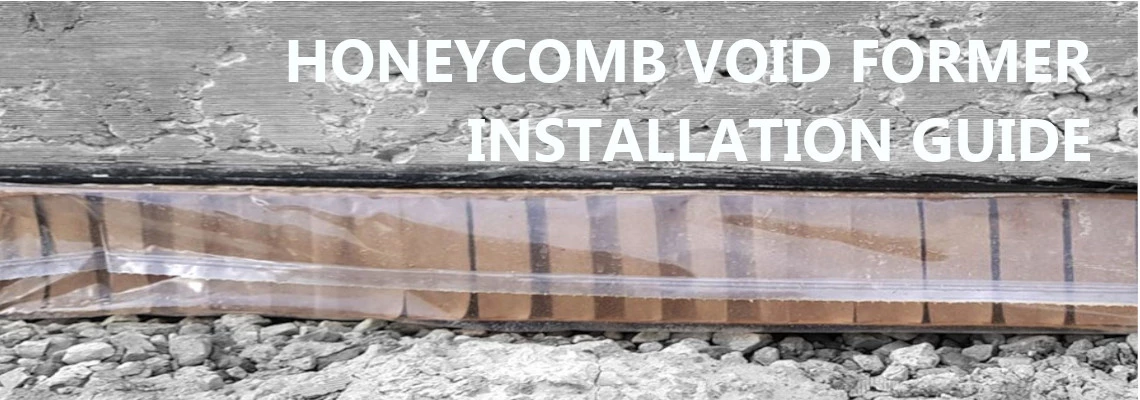
COLLAPSIBLE VOID FORMER INSTALLATION GUIDE*

1. Remove all water from the foundation zone. Collapsible Heave Stopper or Dufaylite Clayboard must not be placed in waterlogged ground. Lay a sand, shingle or concrete blinding to provide a level bed for the boards to rest on with no pressure points to the underside.
2. Lay minimum 125mu (500 gauge) polythene the full width of the excavation and tape all joints. Pay attention to detailing around pile penetrations and corners to ensure a watertight seal. Good practice requires that enough polythene is laid to fold over the Heave Stopper or Dufaylite Clayboard boards to lap with the top layer of polythene. Position Clayboard or Heave stopper, printed face up, making sure the adjoining panels are positioned up closely together.
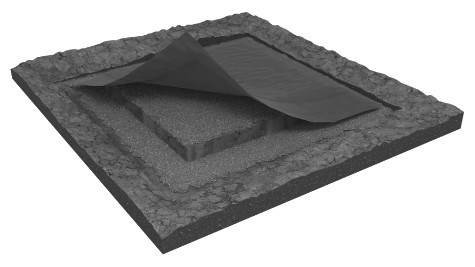
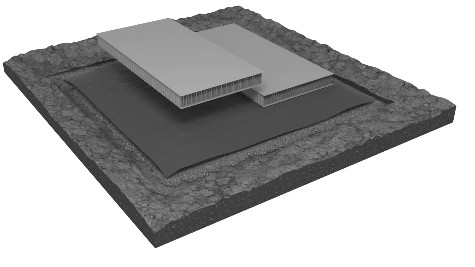
3. Fold over the polythene from the bottom layer to the top face of the void boards and tape all joints.

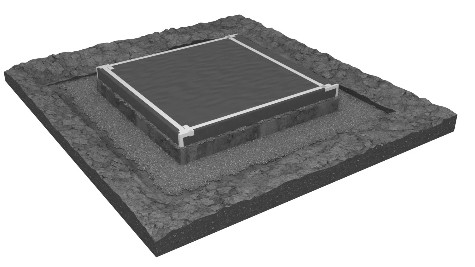
4. Lay minimum 125mu (500 gauge) polythene over the Heave Stopper or Dufaylite Clayboard boards and tape all joints. Ensure there is a good seal where bottom layer of polythene meets tops layer of polythene. Lay steel reinforcement. Use enough spacer blocks to avoid load points and lay the reinforcement.
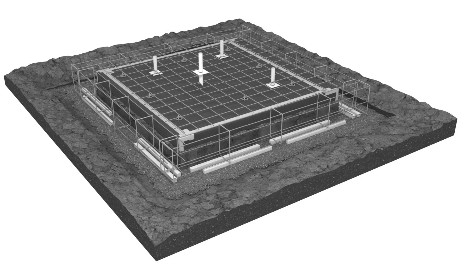
5.Make provision to introduce water into the Heave Stopper or Dufaylite Clayboard boards by way of the Void Pipe. A Void Pipe is required every 25m2 or for every isolated area of void former. Tie the Void Pipe to adjacent reinforcement to hold upright during concrete pour. The pipe is positioned with the raked end to the board face. A small cross is cut into the sheet and the top board of each panel and the Voidpack pipe pushed in until the flange is flush with the board surface.
6. Pour concrete and allow enough time to elapse for the concrete to become self supporting.
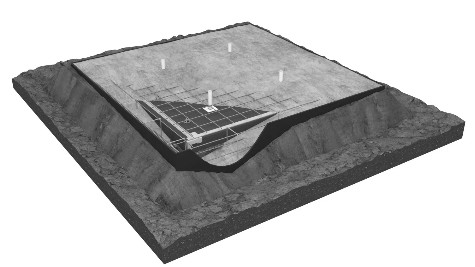
7. Introduce water into the Heave Stopper boards or Dufaylite Clayboard by inserting a hose pipe into the Void Pipe. Flood with enough water to ensure total saturation of the Heave Stopper or Dufaylite Clayboard. Leave water for approximately 2 hours.The amount of water is approximately 15 to 20 liter/m² depending on panel thickness. The water has to be injected with low pressure and begin with about 20% of the amount.
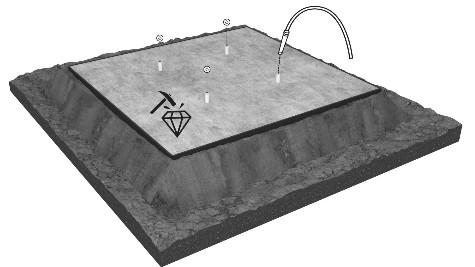
Once the saturation process is complete, strike through the bottom facing and polythene to allow the water to drain.
Seal the pipe holes with cement or waterproof sealant and make good.
Honeycomb void formers will collapse if they receive heavy rain or are exposed for an extended period of time. As per our install guide, it is recommended installing the product and pouring concrete as soon as possible following install.
*(160mm Dufaylite Clayboard + 160mm Heave Stopper)
Picture credit:
1.whiterock-cp.co.uk/installation
2.dufaylite.com/downloads/Dufaylite_Data-Sheet_Clayboard.pdf
3.litecorp.com.au/clayform/










































































































